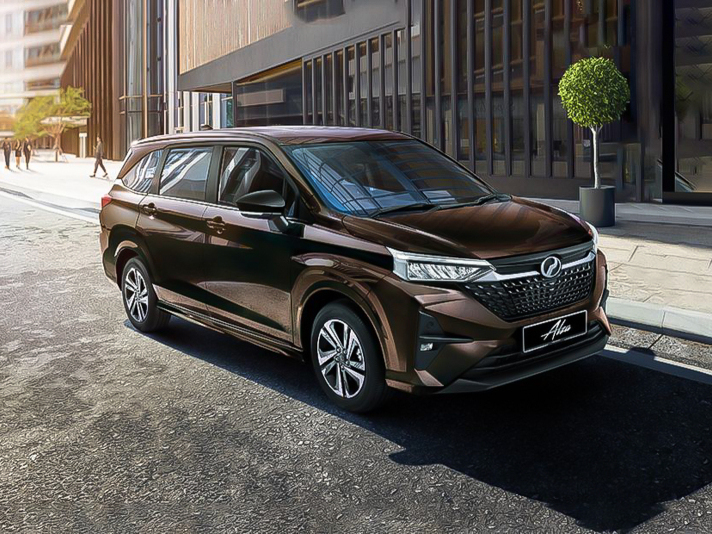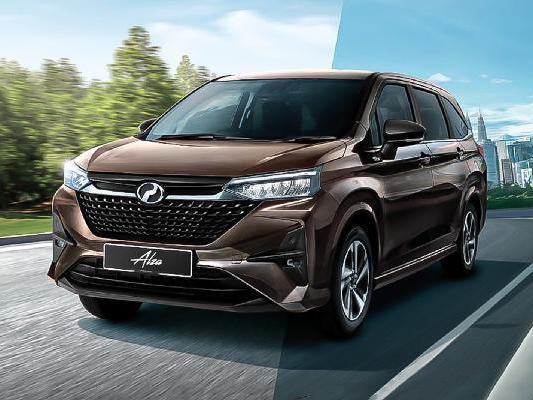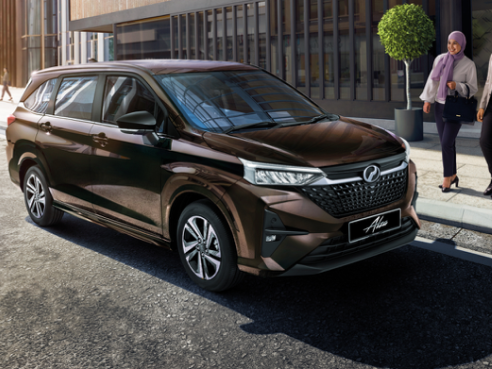Q
how to connect perodua alza bluetooth
The BYD Atto 3 packs a 49.92kWh battery. On paper, that means you'd theoretically need 49.92kWh to fill it from empty, but in real-world charging, you're looking at a bit more due to charging losses – usually around 10%, so you're probably looking at roughly 55kWh to top it up. For Malaysian users, a full charge using a home AC slow charger takes about 7-8 hours. Hit up a public DC fast charger, though, and you can go from 30% to 80% in around 40 minutes – super handy for those longer road trips.
A quick heads-up: charging speeds can vary based on ambient temperature, the charger's power output, and the battery's current state. Keeping up with regular battery maintenance is a good idea to keep it performing at its best.
The good news is Malaysia's charging infrastructure is expanding fast. More and more shopping malls and highway rest stops are installing chargers these days. EV owners can grab local charging map apps like ChargeSini or JomCharge to find the nearest spot.
As a budget-friendly EV option, the Atto 3 delivers around 400km of range – perfect for Malaysian city commutes and short getaways. It’ll also help you save on fuel costs, making it a solid pick for eco-conscious driving.
Special Disclaimer: This content is published by users and does not represent the views or position of PCauto.
Related Q&A
Q
What was the fuel economy of Alza 2018?
The 2018 Alza delivers average fuel economy. Its 1.5-liter naturally aspirated engine paired with a 4-speed automatic transmission returns a combined fuel consumption of approximately 6.5 to 7.0 liters per 100 kilometers. Actual figures may vary depending on driving habits, road conditions, and vehicle maintenance. As a family MPV, its fuel efficiency is par for the course in its class, making it suitable for daily commuting and family use.
If owners want to improve fuel efficiency, they can maintain a steady driving speed, avoid sudden acceleration and hard braking, and regularly replace engine oil and air filters. These simple tips not only help save fuel but also extend engine life.
Additionally, with advancements in automotive technology, hybrid and fully electric models have seen significant improvements in fuel economy in recent years. If fuel consumption is a top priority, these new-technology vehicles are worth considering. However, as an affordable and practical option, the Alza still meets the daily needs of most families.
Q
What are the dimensions of the Alza 2018?
The 2018 Alza measures 4270mm in length, 1695mm in width, and 1600mm in height, with a wheelbase of 2750mm. As a compact MPV, these dimensions offer nimble handling for city driving while ensuring practical interior space, making it ideal for family use. It has a ground clearance of 160mm, which can handle regular road conditions, and a 42-liter fuel tank that meets the needs of daily commuting and short to medium-distance trips. For some extra context, the 2018 Alza uses a front-engine, front-wheel-drive layout. This design helps maximize interior space, especially when it comes to arranging the second and third-row seats. While the third row is more suited for kids or short rides, the overall space performance is still competitive in its class. Additionally, it weighs around 1.2 tons and is paired with a 1.5-liter naturally aspirated engine, striking a good balance between fuel efficiency and power output – perfect for consumers who value practicality and economy.
Q
How many seats does the Alza 2018 have?
The 2018 Alza is a 7-seater compact MPV with a 2+3+2 three-row seating configuration, ideal for families or group outings. The second-row seats slide forward and backward to boost flexibility, while the third row is best suited for kids or short trips. It’s pretty good at space utilization – there’s still basic storage in the trunk when the third row is upright, and folding it down expands cargo capacity even more. The 2018 Alza comes with a 1.5L naturally aspirated engine paired with a 4-speed automatic transmission, focusing on affordability and practicality, with fuel economy that fits daily commuting needs. Among its peers, the seat functions lean into utility – like the split-folding second row, which makes loading longer items easier. Just keep in mind, legroom in the third row might feel a bit tight for adults, so a test drive is recommended. These compact MPVs are popular in the local market because they blend car-like driving feel with the ability to carry multiple people, perfect for budget-conscious buyers who need a 7-seater.
Q
What colors did the Alza 2018 come in?
The 2018 Alza comes with a variety of color options, including Pearl White, Metallic Silver, Metallic Gray, Metallic Black, and Red. These colors are not only classic and timeless but also cater to different consumers' personalized needs. Pearl White and Metallic Silver are the more popular choices because they hide dirt well and are easy to maintain, making them perfect for daily use. On the other hand, Metallic Black and Red give off a sportier vibe, ideal for owners who want a stylish look. Beyond just aesthetics, color choice can also affect a car's resale value. Generally, neutral colors like white and silver are more sought-after in the used car market and tend to hold their value better. Additionally, different colored paints have slight differences in maintenance. Dark-colored paints show scratches more easily and require more frequent waxing and care, while light-colored paints are relatively low-maintenance. If you're considering buying this car, you can choose the right color based on your personal preference and actual usage needs. Also, remember to regularly maintain the paint to keep the car in good condition.
Q
What changes were made to Alza in 2018?
The 2018 Alza gets minor upgrades focused on styling and features. The front end gets a sleeker chrome grille, and new LED daytime running lights boost visibility. Some higher trims also score fresh alloy wheel designs. Inside, the practical layout stays, but seat materials are updated and storage spaces are tweaked. Certain versions add a multifunction steering wheel and an upgraded sound system. Under the hood, it still runs the 1.5L naturally aspirated engine paired with a 4AT gearbox, but the tuning improves low-speed smoothness. Safety-wise, dual airbags and ABS+EBD come standard across the range, while the top trim adds a reverse camera. Notably, this refresh focused on better sound insulation materials, which does a better job of keeping wind noise in check at highway speeds. For used car shoppers, the 2018 model holds strong value on the used market thanks to its reliable reputation and low maintenance costs. Just make sure to check the transmission condition closely—it's the component that tends to need the most attention in this lineup.
Q
What engine options were available in Alza 2018?
The 2018 Alza comes with two engine options: a 1.5-liter 4-cylinder naturally aspirated engine (code 3SZ-VE) and a 1.5-liter 4-cylinder naturally aspirated Dual VVT-i engine (code 1NZ-FE), both known for their reliability and fuel efficiency. The 3SZ-VE engine puts out 104 horsepower and 136 Nm of peak torque, while the 1NZ-FE is slightly more powerful with 107 horsepower and 141 Nm of peak torque. Both are paired with a 4-speed automatic transmission, which works well for city driving. As a family MPV, the Alza's engines prioritize smoothness and durability, making it ideal for daily family use. It also has relatively low maintenance costs and is easy to repair. If you're after more power, keep an eye on newer models—these days, a lot of brands are adding turbocharging or hybrid tech to boost performance and fuel efficiency. But the 2018 Alza still focuses on practicality and affordability, perfect for budget-conscious buyers who value usefulness.
Q
Does the Alza 2018 have good reviews?
The 2018 Alza, as a practical and budget-friendly MPV, generally gets positive reviews, especially suited for family users. Its strengths lie in good space flexibility and fuel efficiency. While the third-row seats are a bit tight, they're acceptable for short trips. The 1.5L engine paired with a 4AT transmission is a mature powertrain with low maintenance costs. The interior focuses on functionality, with materials that meet expectations for its price range. However, in terms of features, it might feel a bit basic compared to competitors from the same era, lacking some modern tech gadgets. The suspension is tuned for comfort, ideal for city driving, but there's noticeable body roll when cornering at higher speeds. It holds its value moderately well in the used car market. As a family runabout, this car checks the boxes, but if you're after better driving dynamics or more tech, you might want to look elsewhere. Potential buyers should definitely test drive it to see if the space and handling fit their needs.
Q
Where was the Alza 2018 manufactured?
The 2018 Alza rolled off the production line at the Karawang plant in Indonesia. As a practical and budget-friendly MPV, it’s won over plenty of family buyers with its flexible interior layout and reliable performance. The main reason it’s built in Indonesia? The region’s well-established manufacturing system and supply chain advantages, which let it meet the needs of Southeast Asian markets. It’s worth mentioning that the 1.5-liter engine under the hood strikes a nice balance between fuel efficiency and power. Plus, with its 7-seat setup, it’s perfect for daily family use or small group getaways. In local markets, its relatively low maintenance costs and ample parts supply further boost its value for money. For consumers considering a used car, the 2018 Alza remains a solid choice—its durability and practicality have stood the test of time, making it capable of meeting most families’ travel needs.
Q
What is the fuel consumption of Alza 2018?
Based on official figures and owner feedback, the 2018 Alza's fuel economy for the 1.5L automatic variant sits around 6.5 to 7.2 liters per 100 kilometers combined. Your actual numbers will vary depending on driving habits, road conditions, and how well you maintain the vehicle – the manual transmission version might be slightly more efficient. Power comes from a 1.5L DVVT naturally aspirated engine paired with either a 4-speed auto or 5-speed manual gearbox. Fuel efficiency is right in the mainstream for its class of MPVs, making it a solid pick for family daily use. To squeeze out better mileage, keep up with regular air filter and spark plug maintenance, check tire pressures often, and avoid sudden acceleration or hard braking. It's also worth noting that MPVs, with their heavier bodies and higher wind resistance, typically drink a bit more fuel than sedans with the same engine size – that's just the nature of the beast. When choosing, you've gotta balance interior practicality against fuel costs.
Q
What is the price of Toyota Zenix 2023?
The 2023 Toyota Zenix is priced between approximately RM 140,000 and RM 170,000 in the Malaysian market, depending on the variant and specifications. Actual prices may vary slightly based on regional dealer promotions or optional extras. Positioned as Toyota's versatile family MPV, the Zenix comes with either a 2.0-liter naturally aspirated engine or a 1.8-liter hybrid powertrain, striking a balance between fuel efficiency and performance. Inside, you'll find a large touchscreen display, smart connectivity features, and Toyota's latest TSS safety suite—all tailored to meet family needs.
It's worth noting that Malaysian MPV buyers typically cross-shop rivals like the Honda BR-V or Mitsubishi Xpander. However, the Zenix holds its own in this segment, leveraging Toyota's strong brand reputation and the added appeal of hybrid technology. If you're in the market, I'd recommend checking with authorized dealers for the latest quotes and promotional packages. Be sure to request a test drive too—you'll want to experience firsthand the hybrid system's smooth power delivery and quiet operation, trends that are quickly gaining traction in Malaysia's automotive landscape.
Popular Cars
Model Year
Car Compare
Car Photo
Latest Q&A
Q
Is a 3.0 liter engine a V6?
A 3.0-liter engine doesn’t always mean a V6 configuration—though V6 is indeed the most common layout for this displacement. The actual engine type depends on the vehicle’s design. For example, some BMW models use an inline-six, while certain Porsches feature a flat-six, both in 3.0-liter form. Even some V8s can achieve a 3.0-liter working volume with cylinder deactivation.
The relationship between displacement and cylinder count boils down to individual cylinder capacity and layout. A typical 3.0L V6 averages around 500cc per cylinder, striking a balance between power delivery and smoothness.
Worth noting: Turbocharging has blurred the lines—smaller engines (like high-output 2.0T units) now match the power of naturally aspirated 3.0Ls. When evaluating engines, don’t just fixate on displacement or cylinder count. Factor in tech like direct injection and variable valve timing—brands tune even identical displacements differently. Some prioritize low-end torque for city driving, while others favor high-revving performance for highway cruising.
Q
What is the difference between a 2.4 L and a 3.0 L engine?
The key difference between 2.4L and 3.0L engines boils down to displacement. The 3.0L's larger cylinder volume means it gulps more air and fuel per combustion cycle, delivering roughly 20-30% more horsepower and torque than the 2.4L – perfect for drivers who prioritize acceleration or towing capability.
That said, the 2.4L shines in fuel efficiency, especially for city driving. Both engines might pack modern tech like variable valve timing or direct injection, but 3.0L variants often get extra performance goodies—think twin-scroll turbos or high-pressure fuel systems.
Just remember: bigger displacement typically means higher road taxes and running costs. Many models offer both options, so choose based on your needs—whether it's power or pocket-friendly mileage.
Q
Is the 3.5 EcoBoost a V6 or V8?
Ford's 3.5L EcoBoost is a twin-turbocharged V6 engine—not a V8 configuration. It combines direct injection and turbocharging tech to deliver near-V8 power from a more compact six-cylinder package. Typical versions punch out around 375 horsepower and 475 Nm of torque, commonly found in F-150 pickups and Explorers. The real win here is balancing performance with decent fuel efficiency.
The core difference between V6 and V8 layouts boils down to cylinder count and refinement—V8s traditionally offer smoother power delivery and higher peak output, but at the cost of added weight and thirst. Modern turbo V6s like this EcoBoost have narrowed that gap significantly. It’s Ford’s poster child for giving buyers the best of both worlds: robust towing capability without the daily-driver penalties of a bulkier V8. If you want American muscle without guzzling fuel or wrestling with a ponderous rig around town, these force-fed six-cylinders hit the sweet spot.
Q
What does 2.4 L I4 mean?
The 2.4L I4 refers to a 2.4-liter displacement engine with an inline-four cylinder layout—a common configuration found in many vehicles. The 2.4L displacement means the total volume of all cylinders adds up to 2.4 liters, and generally, a larger displacement delivers stronger power output, making it suitable for performance-oriented driving. The inline-four design is popular for its compact size and fuel efficiency, striking a good balance between smoothness and noise control while keeping maintenance costs reasonable for daily use. Some models may even pair this engine with turbocharging for extra power and efficiency. If you prioritize fuel economy and reliability without sacrificing everyday usability, the 2.4L I4 is a solid choice, whether for city commutes or long-distance trips.
Q
Which engine is better, V6 or V8?
V6 and V8 engines each have their pros and cons—it really comes down to your needs and how you plan to use them. A V6 is generally lighter, more fuel-efficient, and easier on the wallet for maintenance, making it a solid pick for daily commuting or city driving. On the other hand, a V8 delivers more power and smoother performance, ideal for high-performance cars or heavy towing, though it guzzles more fuel and costs more to maintain.
In hot, rainy climates, V6s tend to handle heat better, while V8s offer more stability at high speeds. These days, turbocharged V6s are closing the performance gap with traditional V8s, though V8s still dominate in luxury and sports models.
Whichever you choose, sticking to regular maintenance and using the right oil viscosity is key to keeping your engine healthy. Just weigh your driving habits and budget—there’s no one-size-fits-all answer.
View MoreRelated News

Perodua Alza Interior Design Revealed: Malaysia's Top Choice for Family MPV
AshleyJul 23, 2025

A Complete Guide to Perodua Alza: Must-Read Money-Saving Tips for Car Buyers
RobertMar 25, 2025

Perodua Alza: Priced from RM 62,500, the most cost-effective all-round MPV?
LienMay 31, 2024

Perodua Traz 2025:Spec, Price and Features
AshleyDec 22, 2025

Perodua Traz receives ASEAN NCAP five-star safety rating, surpassing Toyota Yaris Cross
RobertDec 18, 2025
View More


















Pros
Cons